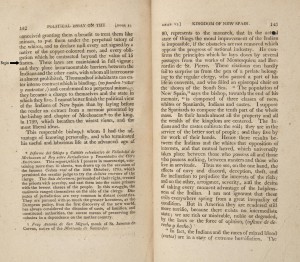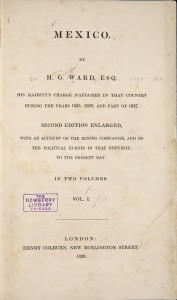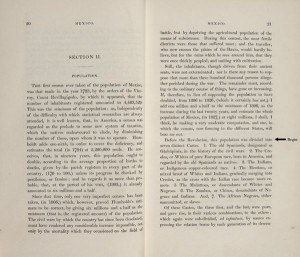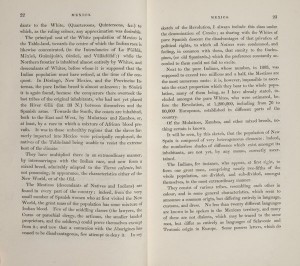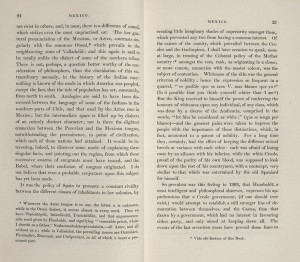“Political Essay on the Kingdom of New Spain” written in 1811 by American, Alexander von Humboldt, explores issues of race from yet another perspective. As an American, and particularly based out of New York, Humboldt has a frame of reference for coexistence (or lack there of) with both free blacks and respective indigenous groups. In this excerpt, Humboldt focuses mostly on the legal implications of the caste system in Mexico and corroborates other primary sources in claiming that the elites perpetuate the degradation of the Indian and mixed-races by consciously exempting them from society. Humboldt remarks on how society works against non-white people and uses the excuse that they are uncivilized, but the incivility they speak of is largely due to the oppression of these groups and “that in the actual state of things the moral improvement of the Indian is impossible, if the obstacles are not removed which oppose the progress.” Similar to Ward, this suggests that there are ulterior motives for the elite European or Creole classes. As the smallest visible group owning the most land, it is beyond evident that they manipulated society in their favour by using propaganda to spread myths of other groups or denying access to unfiltered information in order to marginalize people of colour, ultimately, forcing people of colour to live in the lie the elites created.
He suggests that in the United States and elsewhere, similar power imbalances exist, but suggests that it is more noticeable in Mexico (of which he is speaking on specifically) because of the intermediaries or the people of mixed origin, who do not fit with either group entirely. Because of their more racial fluid identity, mixed-race people may experience inconsistent prejudice from their non-white peers. The manufactured intricacies of the caste system prove to be ineffective when individuals can look like any variation of their racial makeup. In America he describes the fate of an individual as more polarized claiming one is “rich or miserable, noble or degraded, by the laws or the force of opinion.” Discussing the experience of those of African ancestry in New Spain he reveals an imperative admission of the fundamental faults in the system. The mixed races are among the largest obstruction to the system as they “from their colour, their physiognomy, and their cultivation, might be confused with the Spaniards.” Humboldt reflects on the animosity this causes between the groups, understandably, as this most obviously reflects on the triviality of the system.
